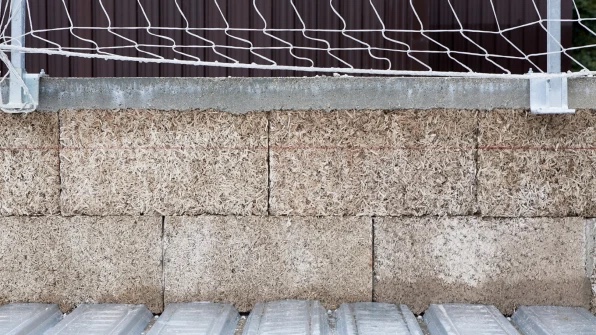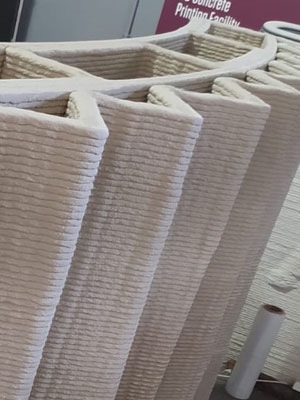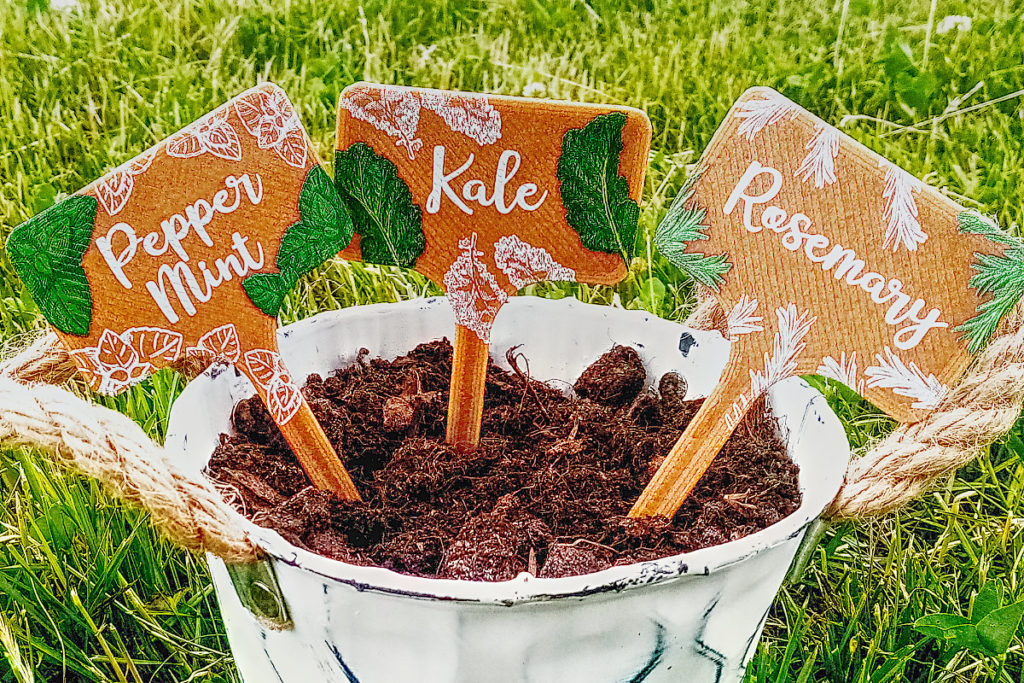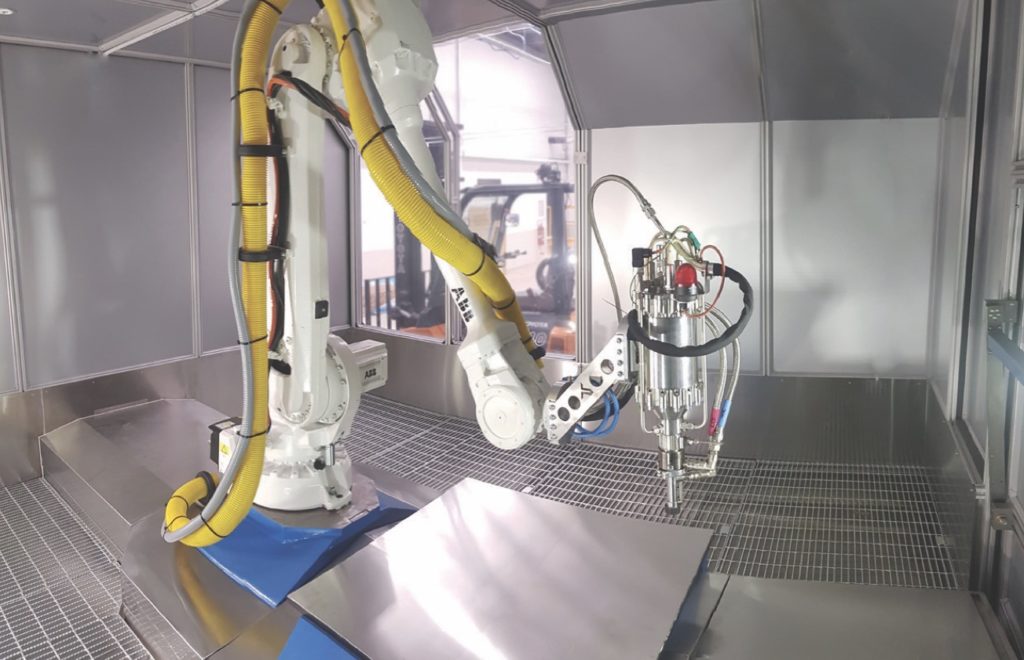3DPrint.com | The Voice of 3D Printing / Additive Manufacturing |
- 3D Printed Wheat Bran Combines with UV Printing to Create Colorful Designs
- New Research Optimizes Weed Pulling with 3D Printing
- Aussie Transport Companies Adopt Cold Spray Metal 3D Printing
- ARPA-E Funds Hempcrete for Construction 3D Printing via Texas A&M Grant
| 3D Printed Wheat Bran Combines with UV Printing to Create Colorful Designs Posted: 12 Jul 2022 06:30 AM PDT Polish startup GREENFILL3D continues to expand the applications for its wheat bran 3D printing feedstock. To make its GF3D Branfill3d material, the company combines PLA with waste from pasta manufacturing. So far, the company has used the filament to 3D print pop-up Point of Sale stands. Now, GREENFILL3D is working with Deckard Design to add full-color UV labelling to the bran-filled parts to make labels for potted plants.
A Polish, Etsy-driven home decor and gadget shop, Deckard Design will distribute the 3D printed products in North America and Europe. Available in two varieties, the posts can be used to describe a range of plants and herbs that one might seed in their garden. GREENFILL3D suggests that the wheat bran improves the surface finish of its parts, while also making them tough. Using 2D UV printing, which Deckard’s founder first relied on for printing colored inks onto metal, Deckard is able to apply colorful images to the wheat material. I’m always happy to see innovation related to green products. In this case, we are not told how much wheat bran is in the PLA mix. So, we can’t really see just how advantageous this material is—especially if it were compared to cardboard or other alternatives. The use of UV inks makes the products more colorful, but may negate any environmental benefit in the first place. I’m wondering how ecological sustainable these UV resins are. My guess is that they aren’t. However, the companies say that they are experimenting with environmentally-friendly materials. For now, I want to urge caution before everyone becomes too enthusiastic. We’ve seen eco-friendly materials before, such as 3D printed lignin, 3D printed milk cartons and more.
Both companies use desktop 3D printers to innovate. I’m hearing of more firm that are developing, iterating, and going to production with extremely low-cost devices, such as Creality 3D printers. In this sense, lower cost printers really do democratize innovation more than in the past by making the technology accessible to anyone that with a few hundred dollars to spare. If they can successfully scale up production, then these businesses will also have a very low cost basis from which to operate. Will someone that got started on a desktop machine ever go to a $200,000 printer? I think that there really is a considerable opportunity here to offer scalable low-cost 3D printing and automation solutions for emerging 3D printing startups. If people can get these inexpensive machines to work well long term, then this could be a big market. The use of low-cost printers can be expanded widely, as can the combination of UV printing on 3D printed parts. This could be a low-cost method to add color and may be an otherwise overlooked opportunity. There may be a number of opportunities in applications such as packaging and point of sale displays that need to be considered, as well. In addition to that, wheat bran is far from the only material that you can mix in with PLA to get interesting properties and possible ecological benefits, as well. I would love to have more data on just how environmentally friendly this is overall, but there is a lot to be inspired by here. The post 3D Printed Wheat Bran Combines with UV Printing to Create Colorful Designs appeared first on 3DPrint.com | The Voice of 3D Printing / Additive Manufacturing. |
| New Research Optimizes Weed Pulling with 3D Printing Posted: 12 Jul 2022 06:00 AM PDT Backyard gardeners view weeds as a nuisance to be pulled. They may be viewed even more negatively by the agricultural industry. Uncontrolled weeds on a piece of farmland can damage the crop, preventing it from reaching its full yield and negatively impacting the overall sale price at harvest. Farmers initially pulled weeds by hand, walking up and down the rows on each field, hunting for any invasive species. This method may have been effective for farmers who were only trying to grow enough food to feed their families. However, as the industry expanded, the areas got larger, and hand-weeding was no longer practical. Modern agriculture has relied heavily on herbicides — chemicals designed to kill the weeds without damaging the crops. Unfortunately, modern science has painted a clearer picture of these chemicals, discovering the long-term impacts that herbicides can have on human health and local ecosystems. The industry needs a new method for weed control. Introducing Sonora OrtizSonora Ortiz is a native of Southern California and is no stranger to weeds. Before coming to the University of Maine, they worked on farms in California, as well as throughout Europe, developing a passion for sustainable agriculture. A casual observer might think this would lead Ortiz to a career in agriculture, but when they reached Orono, they chose a physics major. A weed science class taught by Professor Eric Gallandt — a professor of weed ecology for the School of Food and Agriculture — reignited Ortiz's passion for agriculture. Gallandt invited them to work with him on a project focusing on manual weed control. It might seem like this team is taking a step backward, returning to older methods. However, Ortiz combines 3D printing and physics to teach a metaphorical old dog some new tricks. Pulling Weeds with 3D Printing3D printing has a growing number of applications in nearly every industry, but the agricultural sector has been slower to adopt. So far, the most prominent use there has been prototyping and producing parts for heavy agricultural equipment. The applications may continue to growth the help of researchers like Ortiz, who is combining additive manufacturing with nanotechnology to assist with weed removal in an agricultural setting. Understanding weeds in the wild can be a challenge. These plants adapt to their environment, so there can be massive variability even within the same species. Good science needs control to remove some of this from the experiment and make it easier to draw accurate conclusions about weed removal methods. 3D printing is much more efficient for testing methods of physical weed removal. This involves pulling the plants from the ground, roots and all, instead of treating them with herbicide. Previous research techniques relied on rods as weed substitutes, which provided a control in experimentation but didn't behave like a living plant, with a root system. The alternative was the use of actual weeds grown in soil specifically for such testing. The problem with the latter was that ,once the test was complete, it was unrepeatable. Researchers were stuck waiting for the next batch of weeds to grow, and there was no guarantee that each new plant would be identical to the last. 3D printing, combined with nanotechnology, addresses both of those problems. Researchers like Ortiz can print a test weed with a root system and use that same printed plant repeatedly. Nanocoatings, applied by simply dipping the artificial roots in the coating solution, work to mimic the root hairs that can cling to soil and make it more difficult to remove the entire plant. The science behind these physical weed removal tests goes back to beam-bending physics. How hard can they pull before the roots snap, leaving plant material in the ground to regrow into a new weed? These "force curves" allow researchers to understand how each plant clings to the soil, making it easier to remove them without the need for harsh herbicides or other chemicals that could damage surrounding plants. The Future of 3D Printed Weed PullingWith a new grant, Ortiz will be able to further their research into weed science. Specifically, they will be working with Bashir Khoda, assistant professor of mechanical engineering, to create nanocoatings that actually orient molecules on 3D printed roots to even more accurately replicate the force of hairs on roots. The grant will also allow Ortiz to attend the Weed Society of America annual conference to present their findings. In the long run, Ortiz aims to apply 3D printing techniques to a wide variety of crops to optimize weed control such that weed removal doesn't damage surrounding crops. Feature image courtesy of Mississippi Watershed Management Organization. The post New Research Optimizes Weed Pulling with 3D Printing appeared first on 3DPrint.com | The Voice of 3D Printing / Additive Manufacturing. |
| Aussie Transport Companies Adopt Cold Spray Metal 3D Printing Posted: 12 Jul 2022 05:30 AM PDT Titomic (ASX: TTT) has previously sold its Kinetic Fusion technology to the marine, defense, and aerospace sectors for a variety of applications, including drones. Now, the Aussie company reports that it has sold four low-pressure cold spray systems, dubbed D523s, to the transport industry—its first foray into this sector. Kinetic Fusion is a cold spray process that prints near-net-shape titanium parts which are then machined to size. The company has very large systems attached to robot arms, but also much simpler systems such as the D523 of which it has now sold four to the “engine remanufacturing and rail transport sectors.” All systems will be used for maintenance, repair, and overhaul (MRO) in either repairing, rejuvenating, or replacing parts. Previously, the D523 had been sold to such clients as boilermaker Brauntell and oil and gas company DNC Coatings. Titomic says that it has a focus on coatings and repairs, which is logical since the part cost is low with cold spray. It is also possible to rejuvenate parts by applying new material over worn areas. Additionally, users can use the process to harden components, apply corrosion-resistant coatings to them, and repair larger objects fairly quickly. The largest Titomic systems can cost over $1 million, but you’d probably be surprised at just how accessible their low-cost systems are. The company mentions that all four in total represented revenue to the tune of $314,900. So that’s a surprisingly affordable unit price.
It is a good sign that the firm can offer these affordable systems as seen above but can also then upsell customers on much larger machines, such as the TKF mounted on ABB robot arms. The same system can also be mounted on a gantry to increase its build volume even more.
Australia may be far away, both in distance and in the imagination, for the broader 3D printing industry. However, this local firm can sell four of these systems within its own national borders. It may be nice to chase Airbus, Lockheed, and Volkswagen, but there are many smaller firms that could really use additive manufacturing in production. Our industry really should focus more on the right companies in the right niches, including smaller businesses. MRO, rejuvenation of engines, industrial coatings, and transport generally are much bigger markets together than the large automotive companies. Titomic is showing us that there is a lot more territory to be explored in 3D printing. The post Aussie Transport Companies Adopt Cold Spray Metal 3D Printing appeared first on 3DPrint.com | The Voice of 3D Printing / Additive Manufacturing. |
| ARPA-E Funds Hempcrete for Construction 3D Printing via Texas A&M Grant Posted: 12 Jul 2022 05:00 AM PDT Last month, the U.S. Department of Energy (DOE) awarded a $3.74 million grant to researchers at Texas A&M University, for a plan to research applications for additive construction (AC) using hempcrete. Specifically, the DOE's funding comes from the Advanced Research Projects Agency- Energy (ARPA-E), via its Harnessing Emissions into Structures Taking Inputs from the Atmosphere (HESTIA) program. Hempcrete is any building material made from a mixture of hemp with lime and water. The research team is led by Petros Sideris, an assistant professor at Texas A&M's Zachry Department of Civil and Environmental Engineering. The five other members include three professors that also come from the Zachry Department, as well as two professors from Texas A&M's College of Architecture. The plan centers around exploring the potential for using hempcrete to accentuate the emissions reductions achievable by AC, while also creating affordable residential, and possibly commercial, buildings. 
Regarding resilience, Dr. Sideris is referring to the capabilities of AC to produce unique shapes, as a way to create structures that are more resistant to natural disasters than those produced by conventional construction methods. As for its being net-carbon negative, this is what accounts for its receiving the HESTIA grant, which was created in 2021 specifically for encouraging the use of net carbon negative building materials.  Image courtesy of Texas A&M Although hemp has been used as a building material for centuries, and European companies have been relying on it for modern construction projects for decades, the plant was banned in the U.S. in 1937. It was not until the passage of the 2018 Farm Bill by the U.S. Congress, that American hemp production was once again permitted at the federal level. Since then, scattered amounts of interest in using hemp as a building material have surfaced in news cycles from time to time. Still, there has been little progress in using the material for AC until now, so hempcrete's future incorporation with the technology could be accelerated if the Texas A&M project is successful. Moreover, it would seem that the use of hempcrete in general would itself be accelerated long-term, were cannabis to be legalized at the federal level in the U.S. Federal legalization would facilitate larger supply chains for both cannabis in general, and hempcrete in particular. Its use in production of hempcrete would be a logical way to upcycle large amounts of cannabis industry waste. Finally, the relative independence of AC from existing construction supply chains means that it could be far easier for the material to take off with AC than with companies using conventional building methods. The post ARPA-E Funds Hempcrete for Construction 3D Printing via Texas A&M Grant appeared first on 3DPrint.com | The Voice of 3D Printing / Additive Manufacturing. |
| You are subscribed to email updates from 3DPrint.com | The Voice of 3D Printing / Additive Manufacturing. To stop receiving these emails, you may unsubscribe now. | Email delivery powered by Google |
| Google, 1600 Amphitheatre Parkway, Mountain View, CA 94043, United States | |





0 comments:
Post a Comment